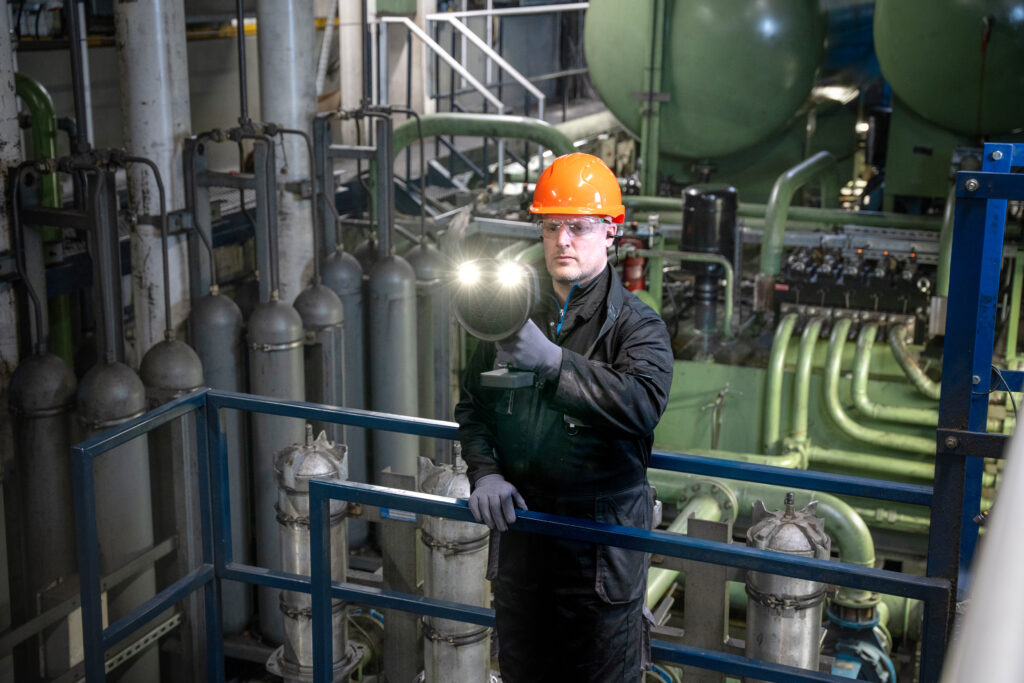By Rob Milner, Global Business Development Director, FLIR
Each and every week of the year, tens of thousands of machines globally are operating in plants preparing food for billions of consumers to eat, twenty-four hours a day. The process involves activities such as mincing, pulping, and shaping products like bread and cheese or filling drink bottles. Throughout the global food processing and production complex, compressed air powering pneumatic tools has become the technology of choice impacting hundreds of different food and beverage processes.
However, undetected leaks can have serious consequences, such as product contamination, reduced yield, increased downtime, and risks to the safety of personnel. The effective use of predictive maintenance tools is crucial to keeping plants running right.
Compressed air is very common in the food industry for various reasons, such as the use of graspers on a beverage production line. Typical industry applications are constructed to feature processes with multiple air compressors to move products, operate pneumatic tools, or pump liquids for various purposes in production lines, packaging, and cleaning. However, one downside is that compressed air leaks usually become worse over time, and can cause significant problems in manufacturing facilities. Therefore, regular inspection and maintenance of compressed air systems is essential to ensure product quality and safety.
Sector-specific challenges, from costs to contamination
The food industry is heavily regulated to ensure public safety and protect consumers from potential health risks. In doing so, air leaks pose some industry-specific issues. First, vacuum leaks can contaminate food and beverages. The air in the factory is likely to contain particles and contaminants that can be harmful to food products. When they occur, vacuum leaks can introduce these contaminants into products, leading to spoilage, quality issues, and even health risks for consumers. Second, compressed air leaks can reduce efficiency and increase operating costs.
Compressed air systems are energy intensive and require significant amounts of electricity to operate. If there are leaks in the system, the compressed air pressure drops and the system must work harder to maintain the required pressure, increasing energy consumption and operating costs. Since non-stop work is not uncommon in the food industry, these additional costs are likely to quickly add up to significant amounts. A single air compressor leak can generate hundreds of dollars worth of additional costs annually, and with multiple leaks, those costs can quickly escalate into five-figure dollar amounts. Compressed air leaks can also affect the performance of pneumatic tools and equipment, thereby reducing their efficiency and leading to downtime for repairs and maintenance.
A fit-for-purpose acoustic solution
To avoid issues such as degraded product quality, increased operating costs, and consumer safety risks, food and beverage manufacturers must regularly inspect compressed air systems to ensure they are working properly and not leaking. This can be done by using an acoustic imaging camera. An acoustic imaging camera is an imaging device used to locate pressurized leaks in compressed air systems or detect partial discharge from high-voltage electrical systems. It consists of a group of microphones which can detect the location of a sound source, in this case, the location of compressed air leaks, to accurately visualize and pinpoint the source of a sound. They can quickly identify even the smallest leaks, improve system efficiency, reduce operating costs, and ensure the quality and safety of food and beverages.
An acoustic camera also accurately detects leaks at great distances, even in noisy environments, without having to interrupt operations. Other benefits include AI-driven automated distance, leak size, and cost estimates, which greatly facilitate decision-making around predictive maintenance in the food and beverage industry.
The advantages of an acoustic camera for detecting air leaks in the food industry:
- Saves time, energy, and costs by locating hidden compressed air leaks in time.
- Increases operational efficiency by avoiding unplanned downtime through early detection of air and gas leaks.
- Quickly scans large areas and accurately locates critical issues, even from a distance and in noisy environments.
- Guarantees product quality and compliance with regulations and controls to which production facilities and equipment are subject.
- Requires minimal training and is easy to integrate into the maintenance cycle.
- Allows inspections to be carried out without interrupting operations.
- Provides real-time results and actionable data for maintenance and repair plans through machine learning-based analytics.
The bottom line is that compressed air leak detection is integral in the food and beverage industry to ensure food is up to code and to prevent and facility downtime that could also impact the accessibility to food and beverage products along with the integrity of the product. Integrating acoustic imaging technology for compressed air leak detection will greatly improve plant process efficiency and help maintain the quality and safety of its products which fuel the world.
